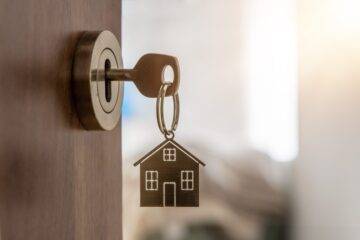Buying Your First Home? The Ultimate Checklist for Buying a House

According to research, homeownership is still a major part of the American Dream.
A lot of people believe that owning a home is a symbol of success, stability, and independence. That said, if you’re thinking about buying a house, you need to get everything in order before you start the process.
It’s important to have a plan and checklist for buying a house in place. You see, an exhaustive checklist will help keep you organized and on track and will minimize the chances of overlooking something important.
In this blog post, we’ll discuss everything that should be on your checklist and take you through how to buy a house.
Conduct a Financial Checkup
The first thing on your checklist for buying a house should be how much home you can afford. That’s going to be driven by several factors, including your income, debts, and how much you have available for a down payment.
It’s important not to bite off more than you can chew — remember, you’ll also have other expenses like property taxes, insurance, and maintenance to consider.
A lender will also pull your credit report as part of the mortgage approval process. This is an opportunity for you to check your credit score and make sure there are no errors that could lead to a lower score and a higher interest rate. If you find any errors, now is the time to dispute them.
You should also have a general idea of how much money you’ll need for a down payment and closing costs. If you don’t have a lot saved up, now is the time to start putting money away.
A good rule of thumb is to aim for a 20% down payment so you can avoid paying private mortgage insurance (PMI), which is required if your down payment is less than 20%.
Get Mortgage Pre-Approval
Pre-approval is different from pre-qualification in that it gives you a more accurate idea of how much home you can afford.
When you’re pre-qualified, the lender will look at your credit score and other factors to come up with an estimate of how much you can afford to borrow.
Pre-approval is based on a more in-depth analysis of your finances, and it gives you a better idea of the interest rate you’ll qualify for. This is important because it’ll affect your monthly payments and, ultimately, how much house you can afford. It’s best to get pre-approved before looking at homes to know what price range to focus on.
If you can’t afford a traditional loan, consider getting an FHA loan instead. It’s usually backed up by the government and may help you afford your dream home. Check out the pros and cons of FHA loans here unitedwholesalelending.com.
Set an Appropriate Budget
You need to set a budget for the purchase price of the home and factor in additional costs like closing costs, furniture, and any renovations or repairs you may want to make.
This is by far one of the best tips for buying a house because it can be easy to get caught up in bidding wars. Or you could simply fall in love with a property and overspend, so it’s important to have a firm budget and stick to it.
When looking at homes, pay attention to things like the condition of the appliances, the age of the roof, and whether there are any cracks or water damage. These are all things that will need to be fixed eventually and can impact your budget down the line.
Find Your Dream Home
When looking at potential houses, it can be helpful to make a list of “must-haves” and “nice-to-haves” before you start your search so that you can keep your priorities in mind.
For example, if you absolutely need a first-floor bedroom for an elderly parent, it would be considered a “must-have.” On the other hand, if you’d like a fireplace or a big backyard but could live without them, those would go on the “nice-to-have” list.
Get a Home Inspection and Appraisal
Before making an offer on a home, you should always get a home inspection. This is basically a thorough examination of the property’s condition, and it can help uncover any potential problems that might not be immediately apparent.
A home inspector will look at things like the roof, gutters, downspouts, HVAC system, plumbing, electrical system, windows, doors, and more. You may not know this as you buy your first home, but they’ll also check for things like mold, mildew, and pests.
You should also get a home appraisal. This is an estimate of the value of the property, and lenders typically require it to approve a loan.
Make an Offer and Negotiate
After finding a home you want to buy, your real estate agent will help you determine how much to offer. The seller may have already set an asking price, but that doesn’t mean you can’t try to negotiate.
In a sellers’ market, there may not be much room for negotiation, but in a buyers’ market, you may be able to get the seller to come down on price or throw in some extras, like appliances.
Get the Final Mortgage Approval and Close on the House
Now that you’ve found a house and your offer accepted, it’s time to get final approval on your mortgage loan. The lender will order a property appraisal to ensure the home is worth at least as much as you’re borrowing.
Assuming everything goes well, the final step is to close on the house. At this point, you’ll sign a bunch of paperwork and hand over a cashier’s or certified check for the down payment plus closing costs. Closing costs average around two to five percent of the loan amount.
The Ultimate Checklist for Buying a House
Buying a home is a huge investment, and the process can be both exciting and overwhelming. However, if you take things one step at a time and do your homework, you’ll be in your new home before you know it.
With our comprehensive checklist for buying a house, you’ll be sure to have everything you need to make the process as smooth and stress-free as possible.
Did you find this guide to buying a house? What other tips are you currently looking for? Our blog post has so much more that you’re bound to find what tips and tricks you may need, so please check it out.










